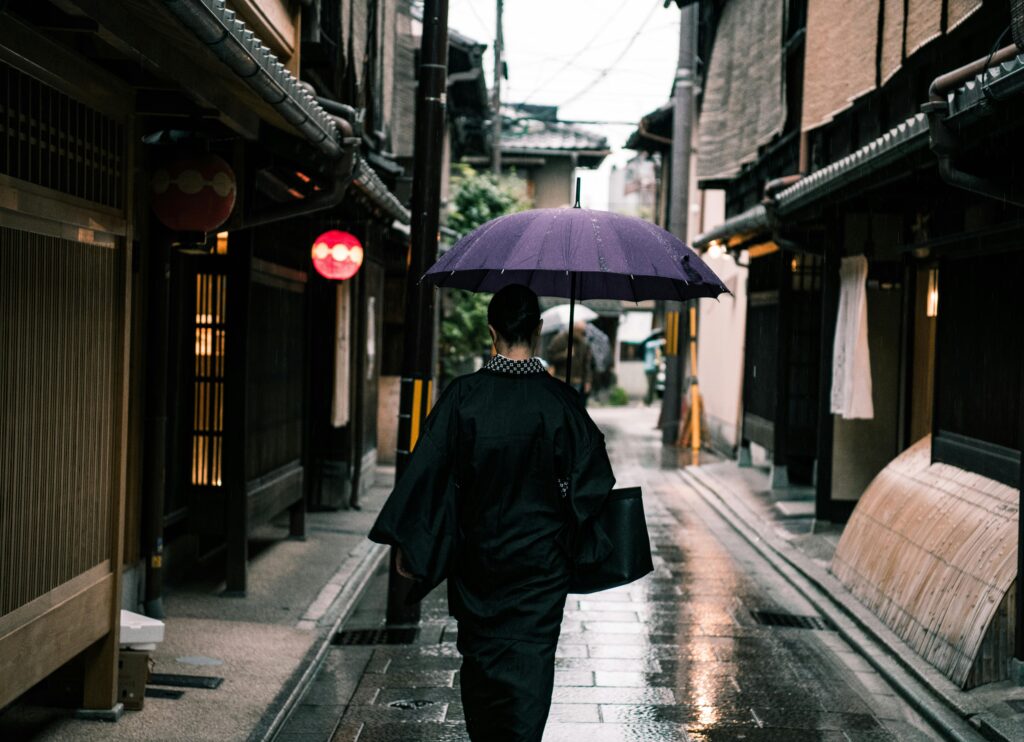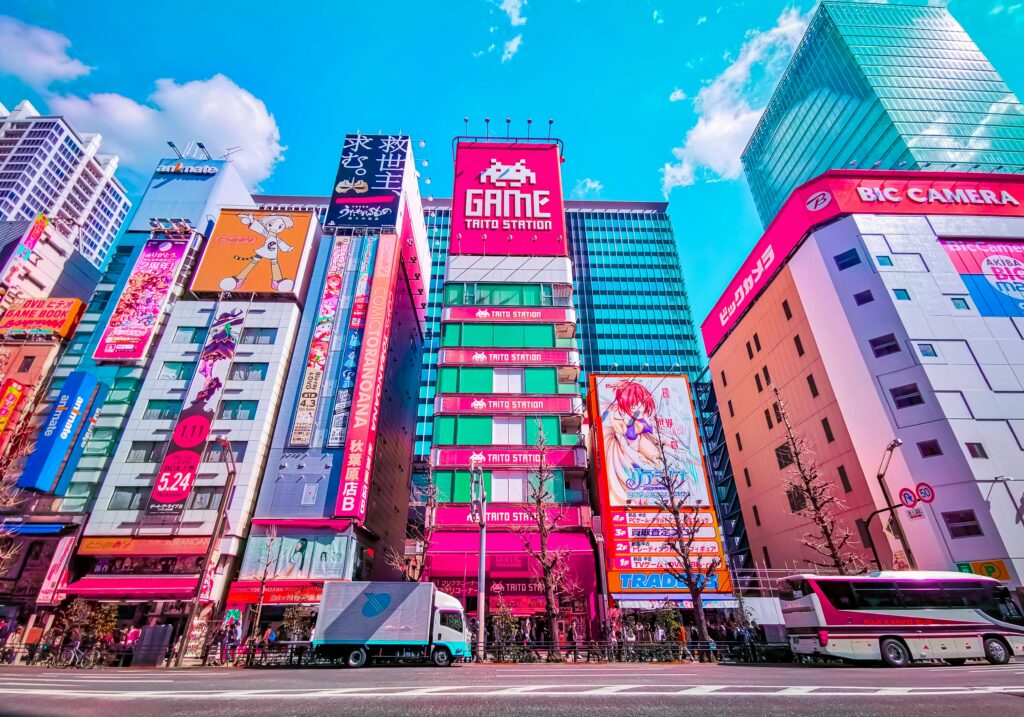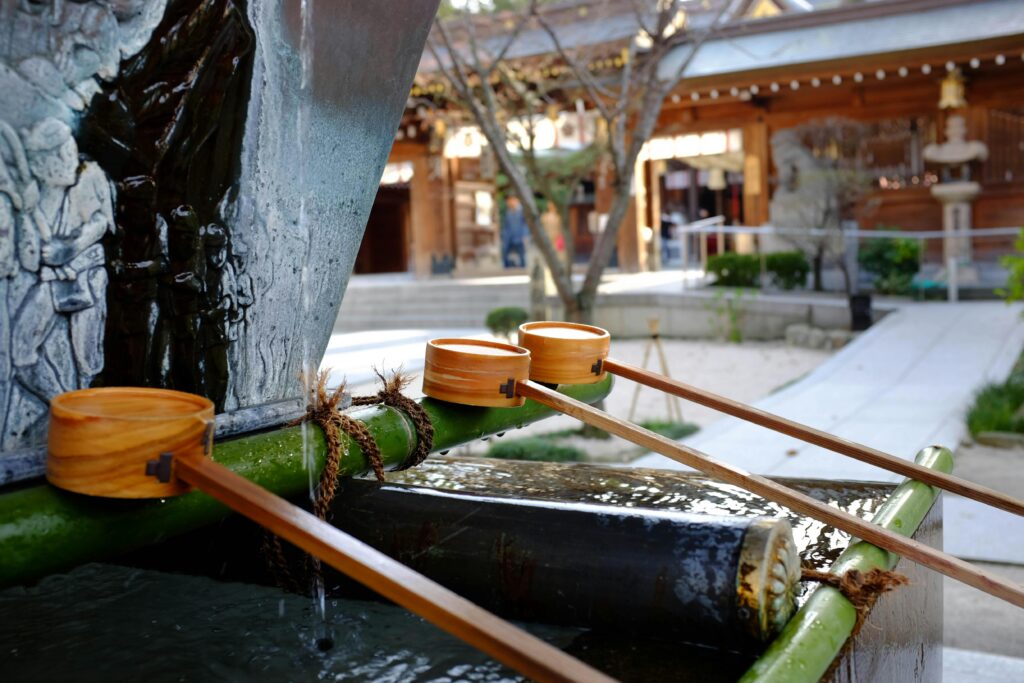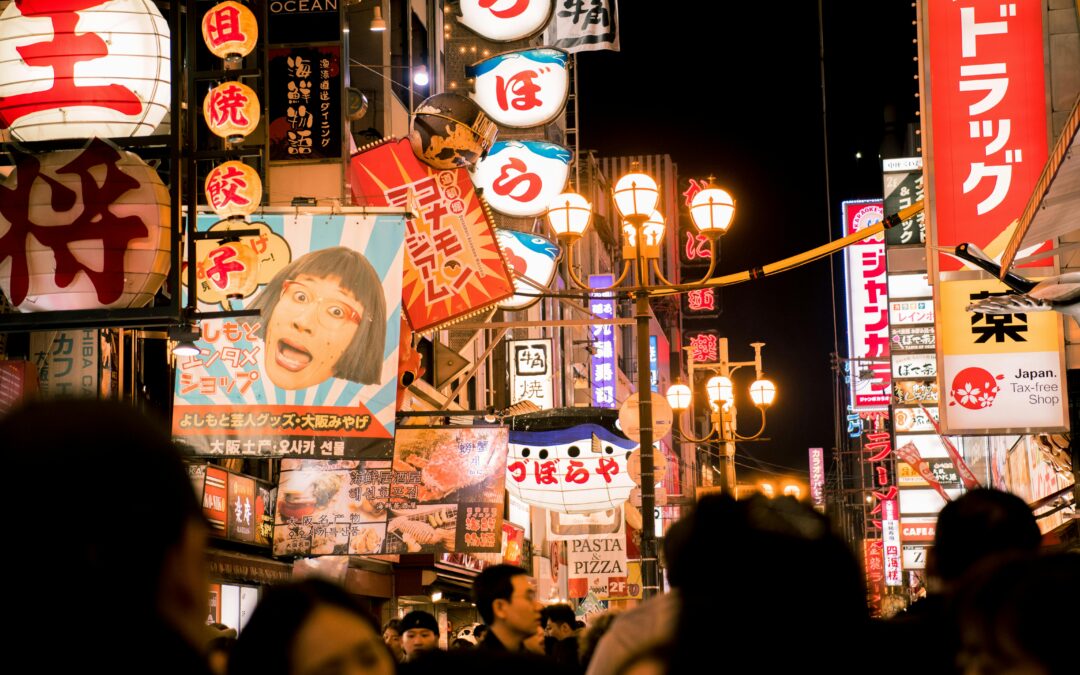The Rise of Japan Overtourism and the Dilemma Brought by Notorious Bad Tourists
Japan is like the crown jewel of travel destinations, no doubt. Picture-perfect temples in Kyoto, neon-soaked streets in Tokyo – it’s a vibe. But hold onto your sushi rolls ’cause there’s a villain in this tale: overtourism. Yep, it’s like that persistent paparazzi that just won’t give anyone a break. Environmental chaos, community stress – Japan’s feeling the burn.
Japan’s famous tourist spots are drowning in tourists like a celebrity at a red carpet event. And let me tell you, it ain’t pretty. We’re talkin’ environmental mess-ups, cultural confusion, and infrastructure that’s about ready to throw in the towel.
Let’s take Kyoto, for example. Once upon a time, it was the epitome of zen and tranquillity. But now? You can’t take a step without bumping into another tourist. For the locals trying to go about their daily lives, this chaos is like navigating a minefield. It’s enough to make anyone’s blood pressure skyrocket.

But it’s not just the sheer numbers of tourists causing the havoc; it’s the behaviour of some of these travellers. Picture this: disrespectful tourists treating the countryside like their own personal playground, trampling crops just to snag that perfect selfie. And let’s not forget about Nara, where the deer probably wish they could file a complaint about all the disrespectful tourists mishandling them like they’re toys.
Another tourist hotspot debacle is Fujikawaguchiko, where the sight of Mount Fuji behind a Lawson convenience store has turned into a real circus. Tourists, hyped up by social media, are flooding in like there’s a flash sale on, causing chaos with littering, pavement blockades, and even trespassing. And here’s the kicker—town officials are resorting to desperate measures, throwing up a colossal 20-metre-tall mesh net to block the view of Mount Fuji. Talk about extreme! Seems like these famous tourist spots just can’t seem to shake off the tourist madness.
So yeah, these places might be #instafamous, but they’re also a hot mess thanks to all these tourists runnin’ amok. But guess what? You, my savvy traveller, can be part of the solution. Use this blog post as a guide to travelling responsibly and helping Japan reclaim its zen amidst the chaos. Let’s make sure your journey leaves behind a trail of savvy exploration, not tourist mayhem.
Ultimate Guide to Being a Respectful Tourist in Japan

Travelling through Japan isn’t just about snapping selfies and ticking off landmarks—it’s about diving headfirst into a culture where respect reigns supreme. So, let’s snatch up those manners and plunge into the dos and don’ts of being a good tourist in Japan.
Respect for Cultural Norms
When exploring the rich tapestry of Japan, embracing cultural norms isn’t just a nicety—it’s a cornerstone of respectful travel. So, let’s chat about Japanese etiquette and how following these customs can make your trip even more awesome.
- Bowing: In Japan, bowing isn’t just a gesture—it’s an art form. Bowing when you’re greeting someone or expressing gratitude is a silent language that speaks volumes, signalling respect and humility in every graceful incline.
- Shoe Etiquette: Before stepping into someone’s home, a traditional ryokan, or certain sacred spaces, slip off those shoes and step into the realm of Japanese hospitality. Pay heed to subtle cues and signage guiding you on when to leave your footwear at the door. It’s a small gesture that speaks volumes about your reverence for local customs.
- Public Conduct: In Japanese society, being quiet and polite reign supreme. Whether you’re riding the rails or waiting in line, maintaining a serene demeanour and speaking softly is the name of the game. Loud or disruptive behaviour? Not cool. Cultivating a tranquil atmosphere fosters harmony and shows respect for those around you.
- Personal Space: In the dance of crowded trains and bustling queues, respecting personal boundaries is non-negotiable. Keep a comfortable distance and refrain from unnecessary physical contact.
- Punctuality: In Japan, where time is revered, punctuality is paramount. Whether you’re meeting friends for tea or embarking on a guided tour, being fashionably late just won’t cut it. Arriving on time not only demonstrates respect for others’ schedules but also ensures seamless interactions and smooth sailing throughout your adventures.
Etiquette Related to Technology Usage
Now let’s talk about the do’s and don’ts of tech etiquette, because nobody wants to be that person—the one whose phone goes off during the quiet climax of a beautiful cultural moment.
- Silencing Devices: You know those moments when you’re in a quiet place, trying to soak up the ambiance, and then someone’s phone starts belting out the latest TikTok trend? Yeah, let’s avoid that. Before you step into any public space, whether it’s a zen temple or a cosy museum, do us all a favour: silence your devices. Trust us, your Twitter notifications can chill for a bit.
- Photography Etiquette: Now, who doesn’t love a good selfie? But before you go full-on Instagram mode, take a quick scan for any signs or rules about photography. They’re there for a reason and it’s not just to cramp your style. Taking shots of people’s faces without asking first can be a bit rude too, especially in busy spots like streets or trains. It’s better to check if it’s cool with the person being photographed or focus on the cool scenery instead.
Navigating Public Spaces

Mastering the art of navigating public spaces is like learning a secret city dance—it’s all about moving with courtesy and consideration. So, let’s get right into the dos and don’ts of urban etiquette.
Sidewalk Etiquette: You’re in Tokyo, surrounded by a bustling crowd. To avoid the dance of dodging people, remember this simple rule: walk on the left. It’s the unspoken rule that keeps the city’s foot traffic orderly and avoids those awkward sidewalk tangles.
Escalator Manners: The escalator, a simple way up or down, but in a crowded place, it’s a bottleneck waiting to happen. Here’s your move: stand on the left, leaving the right free for anyone in a hurry. However, if you’re in certain areas, it might be the other way around: walk on the left and stand on the right. It’s best to take a cue from the people around you and just be constantly mindful about possibly disrupting the crowd.
Queuing: Queuing is where your patience can shine. Whether it’s for coffee or concert tickets, keep it cool and collected. Stand your ground, give people space, and wait your turn. It’s not just polite; it’s what keeps the peace in places where everyone’s after the same thing.
Priority Seats: When it comes to public transport, those priority seats are more than just a spot to sit—they’re a nod of respect. They’re there for the elderly, disabled, or pregnant. If you see someone who needs it more, offer up your seat gracefully.
Shopping Etiquette

Shopping in Japan is a true test of your retail grace! Here’s the scoop on how to shop like a seasoned pro, blending in seamlessly with the locals and making sure you’re remembered for all the right reasons.
- Bargaining: Let’s get one thing straight: haggling over prices in Japan is as out of place as sushi at a barbecue. Prices in stores are not starting offers but final facts. So, keep your inner bargain hunter in check and embrace the simplicity of fixed pricing. It’s smooth, straightforward, and oh-so-respectful.
- Handling Merchandise: When it comes to exploring the treasures on the shelves, look with your eyes, not your hands. It’s all about admiration from a distance—unless you’re genuinely planning to buy. When you do pick something up, treat it with the care of a fragile artefact. Shopkeepers appreciate a gentle touch and it shows you respect their goods as much as they do.
Accommodation Etiquette
When you’re jet-setting across Japan, where you lay your head can make or break your adventure. Let’s dive into the world of Japanese accommodation etiquette, so you can snooze like a pro and not the party pooper upstairs everyone wishes they could evict.
- Ryokan Customs: Stepping into a ryokan is like stepping back in time—seriously, it’s your cultural immersion on a silver platter. But listen up, because it’s not just about kicking off your shoes. Tatami mats? They’re not just the floor; they’re your bed. Respect the space by keeping it clean and clutter-free. Communal baths are the norm here, and yes, they’re communal as in sharing-is-caring. So, scrub up before you dip in, keep the splashing to a minimum, and soak up the tranquillity, not the bathwater.
- Hotel Courtesy: Now, hotels might feel more familiar, but the rules of quiet still apply. Keep your after-hours shenanigans on the down-low, because, believe it or not, not everyone wants to hear your rendition of karaoke hits at 2 AM. Respect quiet hours, and you’ll be the hero of the hallway, not the hallway headache.
Transportation Etiquette
Navigating Japan’s transportation like a true jet-setter means blending seamlessly with the locals and showing a touch of class. Here’s how to ride with style and not disrupt the peace.
- Train and Subway Etiquette: When you’re hopping on the train or subway, think of it as your mobile zen garden. Those priority seats? They’re reserved for folks who truly need them—think of giving up your seat as your good deed for the day. Keep your voice down—no one needs a play-by-play of your adventures (save it for your blog!). Silence is golden, especially on public transit. So, if you’re catching up on a show, scrolling through social media, or listening to music, headphones are a must. Keep the sounds of your personal entertainment to yourself—others on the train probably don’t share your taste in YouTube videos or podcasts. And munching on your sushi roll? Save that snack for later; eating on the go is a no-go, especially during those crammed rush hours.
- Taxi Etiquette: Buckle up, buttercup! First off, forget about playing taxi roulette on the street; join the queue like everyone else. And when you hop in, leave the door duties to the driver—no need to show off your door-opening skills. As for seating, unless you’re not flying solo, backseat’s the spot. And if Granny’s along for the ride, offer her the front seat like the polite champ you are. Safety first, so click that seat belt like it’s the law (because, well, it is). Payment’s a breeze: no tips necessary, just settle up at the end and snag a receipt if you’re feeling fancy. Exiting? Hold your horses until the taxi’s parked, and if the driver’s played doorman, wait for them to close the door before strutting off like the boss you are.
Respecting Personal Boundaries

In Japan, respecting personal boundaries isn’t just polite—it’s paramount. Here’s how you can navigate these waters with finesse and keep things classy.
- Public Displays of Affection: Keep it cool with the cuddles and kisses. In Japan, the vibe is more “less is more” when it comes to public displays of affection. A brief handhold? Sure. But save the more intimate gestures for private moments. By keeping the PDA on the down-low, you align beautifully with the local custom of keeping things understated and respectful.
- Asking for Permission: Got your camera ready to capture the beauty of Japan and its people? Hold up—make sure you get a nod of approval before clicking that shutter, especially when your subject is a local or a passerby. Asking for permission isn’t just about following rules; it’s about honouring the person’s privacy and comfort. Plus, it often opens up a doorway to a more meaningful interaction, turning a quick snap into a memorable exchange.
Dining Etiquette
When you’re dining out in Japan, every meal is a performance, and you’re part of the cast. Here’s how to nail your role and impress the culinary crowd with your impeccable table manners.
- Seating Savvy: Upon entering a restaurant, hold off on the dash to grab a seat. Wait to be seated or let your host or server guide you to your table.
- Mealtime Grace: Patience is a virtue, especially at the dining table. Don’t dive into your dish the moment it lands in front of you. Wait until everyone has their meal. And remember, those chopsticks aren’t drumsticks; lay them on a chopstick holder or beside your dish to keep things tidy.
- Chopstick No-Nos: Speaking of chopsticks, there’s a right way to wield them. Avoid the faux pas of jabbing them vertically into your bowl of rice—this resembles a ritual for the deceased and is considered a major mishap in Japanese culture.
- Culinary Catchphrases: Before you start, say “Itadakimasu” to express gratitude for the meal. Once you’re done, close with a “Gochisousama” to show appreciation for the food and the effort behind it. These aren’t just phrases; they’re your way of embracing Japanese culinary culture.
- Noodle Know-How: Got noodles on your plate? Go ahead and slurp! In Japan, slurping is not rude; it’s the ultimate compliment to the chef, signalling that you’re enjoying the meal.
- Cash Considerations: When it’s time to pay, remember that money doesn’t pass from hand to hand. Use the little tray provided at the counter to exchange cash. It’s a small detail that shows you’re in the know.
Etiquette for Temple and Shrine Visits

Stepping into Japan’s temples and shrines is like walking into a world where every detail matters. To ensure you’re more ‘bless’ than ‘mess’, here’s the scoop on keeping things respectful and serene.
- Dress to Impress—Modestly: Before you even step foot in a sacred space, make sure your outfit respects the vibe. We’re talking modest attire here. This ensures that you maintain the sanctity of these tranquil spots.
- Hush-Hush and Hats Off: Keep your cool and your voice low. These places are not your average tourist spots; they’re areas of worship and reflection. And hey, while you’re at it, ditch the sunglasses and hats. Going bareheaded and clear-faced shows you’re truly present and ready to soak in the peaceful energy.
- Pointing is a No-Go: See something fascinating? Enjoy it with your eyes, not your fingers. Pointing at or touching sacred objects is a big no-no. These elements are steeped in tradition and deserve nothing but respect.
- Photography with Caution: We all love a good photo op, but hold that camera trigger if you see a ‘No Photography’ sign. These areas are sacred, and some moments are meant to be captured just with your heart and mind, not your lens.
Onsen (Hot Springs) Etiquette
Dipping into a Japanese onsen is like entering a zen zone that requires a splash of etiquette and a dash of know-how. Here’s how you can soak up this quintessentially Japanese experience while keeping it classy and respectful.
- Pre-Bath Protocol: Before you even think about stepping into those soothing waters, make sure you’re squeaky clean. Most onsens have shower stations for a reason—use them! Wash up good and proper, because nobody wants a side of grime with their serene soak.
- Towel Tactics: When it comes to towels in the onsen, remember this: they do not belong in the water. Leave your fluffy little friend on the side or neatly folded on your head as you dip.
- Tattoo Talk: Got ink? That’s cool, but not all onsens think so. Many traditional baths still hold to the old views on tattoos, seeing them as taboo. But don’t let that put a damper on your dip plans! Do a little research ahead of time to find tattoo-friendly spots where you can bathe without worry and show off your tattoos freely.
Interacting with Locals
When mingling with the locals in Japan, a little politeness goes a long way, and sprinkling your conversation with the right lingo can make all the difference. Here’s how to charm your way through interactions and make sure you’re remembered for all the right reasons.
- Minding Your Manners: Start with the magic words. “Sumimasen” (excuse me) is your go-to for just about everything—from getting attention to navigating through a crowd. It’s like a polite nudge that says you’re aware and considerate of those around you. Then there’s “arigatou gozaimasu” (thank you very much), which adds a dash of gratitude to any interaction, turning basic exchanges into moments of genuine connection.
- The Art of Apology: Stepped on a toe? Bumped into someone? Or maybe you just accidentally photobombed a family’s holiday snap? Time to whip out your best “sumimasen.” Offering an apology isn’t just about saying sorry—it’s about showing respect and taking responsibility, even for the little oops moments.
Respecting Nature and Wildlife
When you’re out embracing the natural beauty of Japan, from the serene parks to the wild, whispering forests, remember: you’re in Mother Nature’s house now, and she likes her rules followed.
- Wildlife Wisdom: In places like Nara, where the deer roam as freely as the breeze, keep your interactions as natural as possible. Tempted to feed them a snack? Hold that thought. These creatures are part of the landscape, not a petting zoo. Watch and admire, but let them go about their deer business without human interference. It keeps them healthy and keeps you out of trouble.
- No Trace Behind: As for your picnic wrappers and empty bottles, they better find their way into a bin faster than you can say “kawaii.” Littering isn’t just rude; it’s harmful to the pristine environments that make Japan a wonder to explore. So, pack up your trash and keep those scenic spots as spotless as you found them.
- Understanding Garbage Segregation: Japan takes trash treatment seriously, and they’ve turned garbage disposal into an art form. You’ll find separate bins for combustible trash, non-combustible waste, and recyclables like plastics and cans. Each type of waste has its place, so make sure you’re sorting your trash as the locals do.
A Call for Responsible Tourism
Alright, Japan’s dealing with a case of tourist overload, and everyone’s pointing fingers. But let’s get real here: both the policymakers and the tourists need to step up their game if we want to keep Japan’s magic alive. So, to all you jet-setters out there, how about dialling down the impact on Japan’s delicate spots?
Spread your love around, get involved with the locals—perhaps while enjoying a Flip Japan Group Tour—and let’s keep Japan awesome for the long haul. It’s about time we balance those tourism bucks with a little respect for Japan’s heritage and people.


Recent Comments